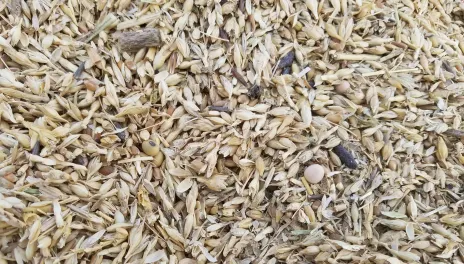Weed Seed Management Considerations
It feels like winter has lasted 100 days already, but we’re actually just over halfway through the official winter season. And while that seems hopeful, we all know spring can be a real doozy. At this point, with all the subzero wind chill days we’ve experienced, you have likely used more of your livestock feed resources than anticipated. If that is the case and you’re into your reserves or needing to purchase feed, here are some considerations from a post-winter manure management standpoint.
- Most often, your reserves are not necessarily your “best” feed resources, likely because they are lower in quality and possibly contain more contaminants (weed seeds) than you would typically like. Feeding your reserves is not a bad thing, you just need to make sure you keep track of where you’re feeding and spreading the manure. Knowing where the manure goes gives you the opportunity to get ahead of any potential noxious or troublesome weed issues.
- If you need to purchase feed, whether it is hay, grain or screenings, keep records about where you store it, where you feed it and where you spread that manure. Again, keeping records gives you the best opportunity to monitor and catch any potential weed issues early. You can find the 2022 Palmer amaranth update video playlist here: https://youtube.com/playlist?list=PL8tV8VlwZH8llvP0iLPi8ZeHL1WizcZuY.
- The manure, which includes feces, bedding and spilled or uneaten feedstuffs, should be kept in one area and composted. Composting manure has been shown not only to reduce the volume of manure and kill parasites and pathogens, but also is an effective weed seed management strategy. Piling manure and turning it five to six times every 10 to 14 days should achieve temperatures between 130-160 degrees Fahrenheit. The high temperatures along with proper pile moisture will kill both large and small weed seeds. To learn more about composting manure, view the NDSU Extension publication, Composting Animal Manures: A Guide to the Process and Management of Animal Manure Compost at https://tinyurl.com/NDSUCompostingAnimalManures.
- If livestock are being fed on pasture or hay land, it is recommended that producers use non-native areas where weeds can be easily spotted and treated. Feeding weed seed-heavy feeds on native rangeland adds both unnecessary seeds and nutrients which can benefit invasive grass species, such as Kentucky bluegrass and smooth brome, the following growing season.
For more information about weed seed management in manure, contact your local NDSU Extension agent at https://www.ndsu.edu/agriculture/ag-home/directory.
Mary Keena
Mary.Keena@ndsu.edu
Extension Specialist, Livestock Environmental Management

